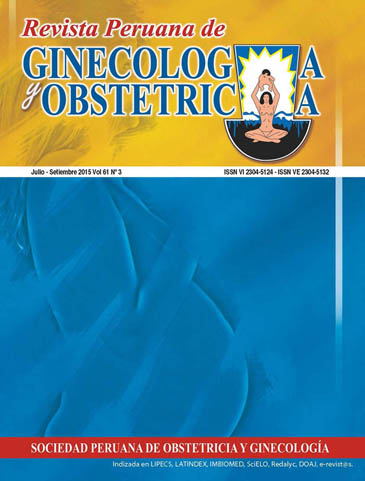Twin-twin transfusion syndrome (TTTS)
DOI:
https://doi.org/10.31403/rpgo.v61i1856Abstract
Objectives: To review twin-twin transfusion syndrome (TTTS) comparative results by techniques used in regards to diagnosis, treatment, survival and complications, as well as current management of this complication in Peru. Methods: Articles published in specialized bibliographic sources were revised, and experience in Peru and Chile on management of this syndrome was analyzed. Results: TTTS is an uncommon complication of monochorionic twin pregnancy with major repercussion on the health of both fetuses. Treatment of choice of severe cases (Quintero I-IV) is fetoscopic laser photocoagulation of superficial and deep anastomoses at 18-26 weeks of pregnancy. About 140 cases per year occur in Peru and implementation of this technique is necessary. Conclusions: Elective treatment of severe cases of TTTS is fetoscopic laser photocoagulation of superficial and deep anastomoses between 18-26 weeks of gestation. This technique should be implemented in Peru.Downloads
Download data is not yet available.
Downloads
Published
2015-11-12
How to Cite
Huamán Guerrero, M., & Yamamoto Cortez, M. (2015). Twin-twin transfusion syndrome (TTTS). The Peruvian Journal of Gynecology and Obstetrics, 61(3), 281–285. https://doi.org/10.31403/rpgo.v61i1856
Issue
Section
Simposio
















